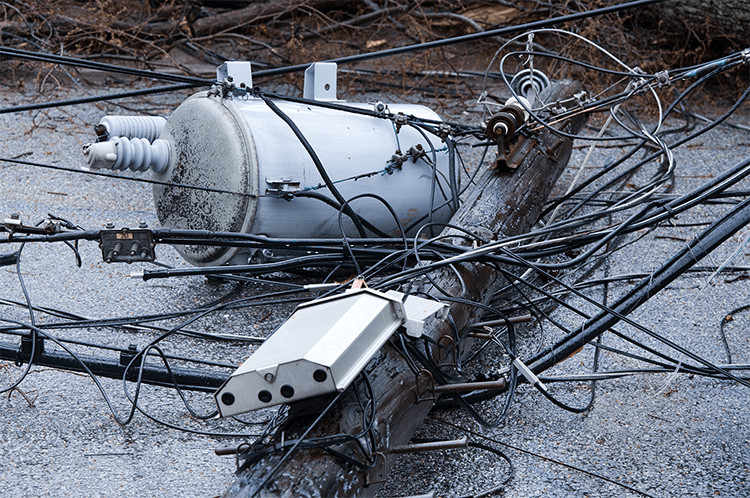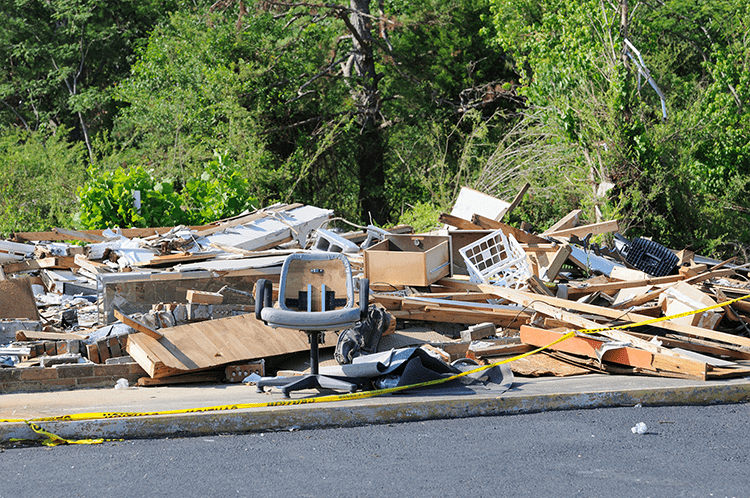 Back to News
Back to News
April 25, 2018
#DisasterPrep — Is Your FFL Ready for Severe Spring Weather?
Severe weather and weather disasters have become all too common — and all too often businesses aren’t prepared to respond appropriately when severe weather emerges. Statistics show that when businesses close due to a disaster, 25 percent never reopen. As they say, an ounce of prevention is worth a pound of cure, and a little precaution before a crisis occurs is preferable to a lot of fixing afterward.
Spring is a time of year I believe we all look forward to; I know I do. It’s also a time for unpredictable weather. As a business, you need to do all you can to safeguard your business and assets so you can expedite recovery and get back in the game as soon as possible. More importantly, as an FFL, you have a responsibility to protect the public from the risk of theft or other loss of firearms and ammunition when natural disasters occur.
Now is the time to start reviewing your springtime disaster plans and disaster communications strategies. But before building your plan, you must know what to plan for.

Thunderstorms cause most of the severe spring weather and can bring damaging lightning, hail, tornadoes and flooding. Understand not only those risks that will impact your business and the vicinity but those that can impact your ability to evacuate the area, get to shelter, access your business after the weather passes and return to your home. Also know what vulnerabilities may exist that can impact utilities, first responders access, etc.
Once you have the ball rolling on building your plan, know how you’ll be warned about impending weather. You’ll also want to compile a list of possible aid resources are in your area and evaluate the likelihood of their availability in an emergency so that you can devise a backup plan if help is unable to reach you (or if no warning systems are in place).
Weather Terms to Know
Part of your disaster prep plan includes understanding the terms used by forecasters. Examples include:
- Flash Flood — A flood caused by heavy, excessive rainfall in a short period of time, generally less than six hours. A dam failure can also cause a flash flood.
- Flash Flood Watch — Flash flooding is possible in and close to the watch area, but the occurrence is neither certain nor imminent. Listen to the National Weather Service, radio or television for continued updates.
- Flash Flood Warning — Flash flooding is in progress, imminent or highly likely. Seek higher ground immediately and evacuate if directed to do so.
- Severe Thunderstorm — A thunderstorm that can produce a tornado, with winds of at least 58 mph (50 knots), and/or hail at least ¾-inch in diameter. Structural wind damage may imply the occurrence of a severe thunderstorm. Thunderstorm winds equal to or greater than 40 mph (35 knots) and/or hail of at least a ½-inch is defined as “approaching severe.”
- Severe Thunderstorm Watch — The possibility of severe thunderstorms in your area is likely to occur. Watch the sky and stay tuned to your local weather services to know when an upgraded warning status is issued.
- Severe Thunderstorm Warning — A severe thunderstorm is occurring or will likely occur soon in your area. Warnings are for imminent danger to life and property to those in the path of the storm. Seek shelter immediately.
- Tornado — The National Weather Service (noting attribution to FEMA) defines a tornado as “A violently rotating column of air touching the ground, usually attached to the base of a thunderstorm. Winds of a tornado may reach 300 miles per hour. Damage paths can be in excess of one mile wide and 50 miles long. Strong downburst (straight-line) winds may also occur…. Hail is very commonly found very close to the tornadoes…. Every state is at some risk from this hazard.

Some tornadoes are clearly visible, while rain or nearby low-hanging clouds obscure others. Tornadoes develop extremely rapidly and may dissipate just a quickly. Most tornadoes are on the ground for less than 15 minutes.
Before a tornado hits, the wind may die down and the air may become very still. A cloud of debris can mark the location of a tornado even if a funnel is not visible.
- Tornado Watch — Tornadoes are possible in your area. Remain alert for approaching storms. Listen to the media for updates.
- Tornado Warning — A tornado has been sighted or indicated by weather radar. Take shelter immediately.
Communications
Before, during and after a disaster, you will need to communicate with employees, emergency responders, ATF and other local resources during an emergency. Your employees will need to be familiar with the full disaster preparedness plan, understanding who they should call to report that they are safe and how they are to receive updates. Naturally, your plan should include all employee contact information; large organizations should consider for notifications.
Don’t overlook using social media as a communications tool. State and local agencies use social media outlets to provide information on utility outages, flooding, road closures, etc., and direct messaging and Twitter can prove to be a powerful solution for distributing information, keeping the community in the know and informing employees.
Firearms and Ammunition Concerns
A major component of your plan should include having the capability to safeguard and protect your firearms inventory, ammunition and records. In the event you’ll be moving inventory or records to an alternate location, you must contact your local ATF field office to let them know and gain additional guidance you may need.
In the face of a disaster, it’s crucial that you have an accurate inventory and up-to-date records. These will be vital to assisting law enforcement and establishing losses for insurance purposes. Of course, that also means you’ll want to review your insurance policies regularly and understand the weather event damages covered by your policy. Most policies do not cover floods and other natural disasters, so if your area is particularly prone to such disasters, consider policy to enhancements to address those shortfalls, including reimbursement for business disruption in addition to physical losses. Keep all of your insurance policies, important documents and other valuables in a safe, secure location, with copies in a secure secondary location.
Additional Resources
If you don’t have a plan in place, support is available through NSSF, ATF and the Department of Homeland Security. You’ll also find the following links helpful:
- ATF Disaster Preparedness for Federal Firearms Licensees
- ATF Publication 3317.7
- Ready.gov – Be Informed / Severe Weather
- Insurance Institute for Business & Home Safety
- Open For Business Toolkit
- The Easy Way To Prepare Your Business For The Unexpected
- Ready.gov – Preparedness Planning for Your Business
You May aslo be interested in: What to Do with Firearms and Ammunition Affected by Flood Waters
Categories: BP Item, Featured, Retailers, Top Stories









